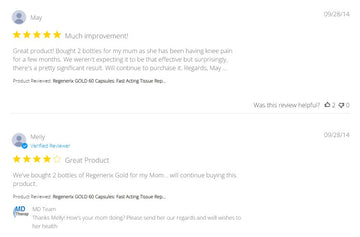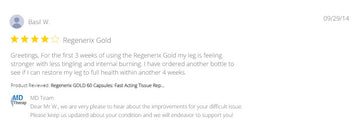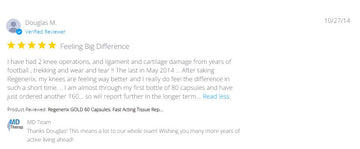Supine Lumbar Rotation (“Windshield-Wipers”): Gentle Twist to Unstick a Stiff Low Back & Hips
by MD therapeutics on Aug 17, 2025
Why supine lumbar rotation helps (the principles)
-
Facet & capsule “wash”: Slow side-to-side knee drops create small, controlled rotations that bathe lumbar facet joints and posterior capsules with synovial fluid—often easing morning or desk-posture stiffness.
-
Disc/endplate pressure cycling: Gentle rotation changes intradiscal pressures and encourages fluid exchange, which can feel restorative when tolerated.
-
Hip–pelvis coordination: Moving both legs together teaches the pelvis to rotate smoothly on the thorax, reducing shear at the low back during walking and turning.
-
Safe, self-limited loading: Supine support keeps forces low; you set depth and tempo to stay ≤3/10 on the pain scale.
Often helpful for: nonspecific low-back pain, mild spondylosis, facet-comfort patterns, and hip stiffness.
Modify/avoid: acute disc herniation with leg symptoms or fresh injuries—use micro-ranges or a clinician-guided alternative.
How to do it (range-aware & comfortable)
-
Setup: Lie on your back, knees bent, feet hip-width, arms in a “T.”
-
Exhale → drop both knees a few inches to one side while shoulders stay heavy; inhale → return to center; repeat to the other side.
-
Keep ribs softly down and neck long; stop well before pinch, sharp pain, or tingling.
-
Dosage: 2–3 sets × 6–10 slow reps/side, 1–2×/day or as warm-up.
-
Options:
-
Feet wider than hips for an easier start;
-
Pillow between knees to calm hip/ SI tension;
-
Rest knees on a bolster for supported rotation;
-
Progress to small end-range holds (5–10 s) if comfortable.
-
Limits of exercise alone
-
Systemic drivers (sleep, stress, diet, metabolic health) aren’t fixed by mobility work.
-
Flares cap load, creating stop–start progress without broader support.
-
Specific deficits persist: Many also need hip hinge mechanics, glute/abductor strength, and thoracic mobility.
-
Slow remodeling: Discs, tendons, and joint capsules adapt over months—consistency plus recovery and nutrition beats “exercise only.”
Why add nutritional correction
-
Improve circulation for oxygen/nutrient delivery after sessions.
-
Promote repair with structural inputs (e.g., collagen peptides, hyaluronic acid).
-
Reduce excessive inflammation so daily practice stays tolerable.
-
Avoid tissue damage by buffering oxidative and catabolic stress from repeated loading.
Botanicals & nutrients often paired with back-friendly rehab
(Blends traditional lore with published research; evidence ranges from promising to mixed. Check interactions and personal suitability with your clinician.)
-
Ginger (Zingiber officinale): Ayurveda/East Asian lore for circulation and “wind-damp” aches; standardized extracts show modest symptom support in some osteoarthritis trials.
-
Turmeric / Curcumin (Curcuma longa): Core Ayurvedic spice; bioavailability-enhanced curcumin has reduced knee-OA pain and improved function versus placebo in multiple studies; culinary turmeric alone has little curcumin.
-
Boswellia / Frankincense (Boswellia serrata): Ayurveda’s shallaki; standardized extracts have demonstrated improvements in pain/function in OA cohorts.
-
Winter Cherry / Ashwagandha (Withania somnifera): Adaptogen for resilience; clinical work suggests immunomodulatory effects and symptom support that can aid training tolerance.
-
Collagen Peptides (Type II focus): Provide peptides that may support cartilage/connective-tissue metabolism—useful alongside gentle rotational loading.
-
Hyaluronic Acid (oral): Contributes to lubrication/viscosity; used to support joint comfort and smooth motion.
-
Cat’s Claw (Uncaria spp.): Amazonian tradition for “rheumatism”; small trials report short-term pain improvements (evidence base still developing).
The practicality problem
-
Food-only dosing is tough: Hitting research-like intakes of curcumin/ginger via meals every day is impractical.
-
Pill burden & cost add up: Buying six–seven separate products (ginger, turmeric, boswellia, ashwagandha, collagen, HA, cat’s claw) multiplies capsule counts and monthly spend compared with one comprehensive formula.
A convenient all-in-one option: Regenerix Gold™
Prefer lumbar rotations + nutrition without juggling bottles?
-
What’s inside: Hydrolyzed Type II Collagen, Hyaluronic Acid, plus Ginger, Turmeric, Frankincense (Boswellia), Cat’s Claw, and Winter Cherry (Ashwagandha)—the same seven ingredients discussed above—combined to promote healthy joint and muscle function and support everyday recovery.
-
Dosing: 2–3 capsules daily.
-
Price: $98 a bottle.
-
Why it fits here: One product covering seven evidence-linked ingredients is simpler—and typically more cost-effective—than buying 5–7 separate supplements.
-
Track record: Recommended by doctors and physical therapists internationally for about a decade (individual clinician views vary).
Supplements support healthy function; they don’t diagnose, treat, or cure disease. Check interactions (e.g., anticoagulants with turmeric/ginger/boswellia) and suitability with your clinician.
This week’s mini-plan
-
Daily: Supine rotations 2–3 sets × 6–10 slow reps/side; linger 5–10 s at easy end-range.
-
2–3×/wk pairings:
-
Pelvic tilts (find & hold neutral),
-
Cat–Cow (micro-ranges),
-
Hip-flexor & hamstring gentle stretches,
-
Glute bridges (maintain neutral).
-
-
If symptoms spike: Reduce range by 30–50% or switch to supported holds; re-progress once symptoms settle within 24 h.



